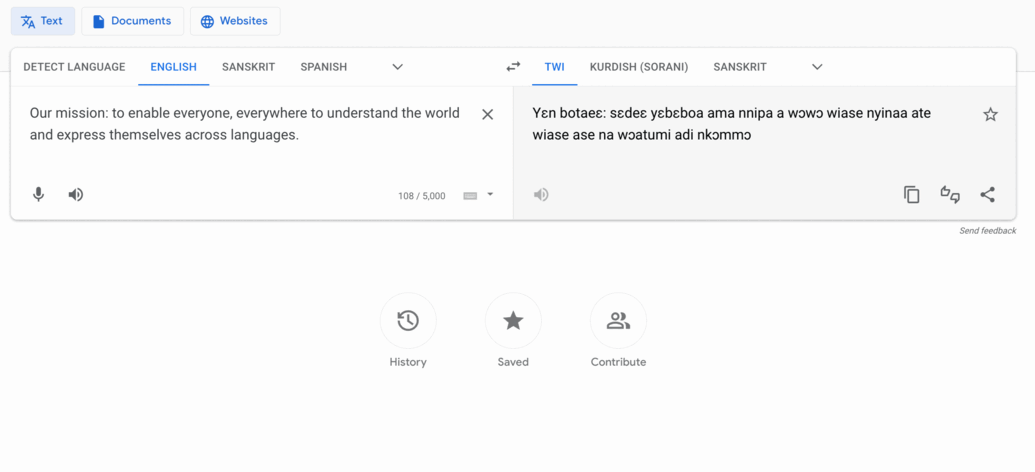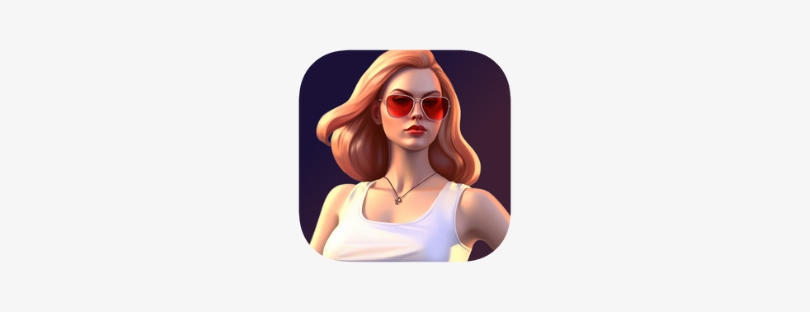
Google Translate adds 24 new languages
Google has added 24 new languages spoken by more than 300 million people to its Google Translate platform. Ten of the new additions are in Africa, including Lingala, Twi and Tigrinya and Google is now supporting a total of 133 languages around the globe. Google Translate languages
“For years, Google Translate has helped break down language barriers and connect communities all over the world,” the US-based company said.
It added that it now wants to help those whose languages “aren’t represented in most technology”.
The new languages range from Bhojpuri, which is spoken by as many as 50 million people in northern India, Nepal and Fiji, to Dhiveri with its estimated 300,000 speakers in the Maldives.

The move now brings to 133 the total number of languages available on Google Translate.
- Faroe Islands take on Google Translate
- The languages that defy auto-translate
The company says the new languages also represent a technical milestone, explaining that they use a machine learning model which learns to “translate into another language without ever seeing an example.”
This can be useful for languages where large datasets of human translations, which can be used to train a computer, are not available.
But the company admits that the technology isn’t perfect.
So will the translations be accurate? Some polyglots have noted problems with the languages already available.
“For many supported languages, even the largest languages in Africa that we have supported – say like Yoruba, Igbo, the translation is not great. It will definitely get the idea across but often it will lose much of the subtlety of the language,” Google Translate research scientist Isaac Caswell told the BBC.
With the new languages, he said, it would be no different. But the people who helped in the research said it was a good place to start.
“In the end, we have to make the call. And my impression from other people I have talked to was that it was a very positive thing for them,” Mr Caswell said.
In 2020, Google Translate added five new languages to the platform in what was then its first expansion in the past few years.
Here’s a complete list of the new languages now available in Google Translate: Google Translate languages
- Assamese, used by about 25 million people in Northeast India
- Aymara, used by about two million people in Bolivia, Chile and Peru
- Bambara, used by about 14 million people in Mali
- Bhojpuri, used by about 50 million people in northern India, Nepal and Fiji
- Dhivehi, used by about 300,000 people in the Maldives
- Dogri, used by about three million people in northern India
- Ewe, used by about seven million people in Ghana and Togo
- Guarani, used by about seven million people in Paraguay and Bolivia, Argentina and Brazil
- Ilocano, used by about 10 million people in northern Philippines
- Konkani, used by about two million people in Central India
- Krio, used by about four million people in Sierra Leone
- Kurdish (Sorani), used by about eight million people, mostly in Iraq
- Lingala, used by about 45 million people in the Democratic Republic of the Congo, Republic of the Congo, Central African Republic, Angola and the Republic of South Sudan
- Luganda, used by about 20 million people in Uganda and Rwanda
- Maithili, used by about 34 million people in northern India
- Meiteilon (Manipuri), used by about two million people in Northeast India
- Mizo, used by about 830,000 people in Northeast India
- Oromo, used by about 37 million people in Ethiopia and Kenya
- Quechua, used by about 10 million people in Peru, Bolivia, Ecuador and surrounding countries
- Sanskrit, used by about 20,000 people in India
- Sepedi, used by about 14 million people in South Africa
- Tigrinya, used by about eight million people in Eritrea and Ethiopia
- Tsonga, used by about 7 million people in Eswatini, Mozambique, SA and Zimbabwe
- Twi, used by about 11 million people in Ghana









